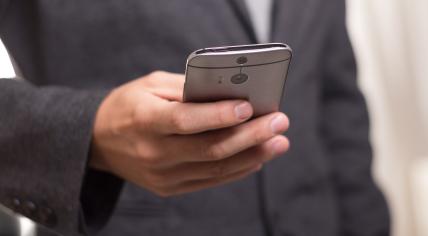
How the new legislation will stimulate competition
If all smartphones have the same charging port, manufacturers will have to focus more on other factors, such as price, camera, and battery life. This could lead to more innovation and better products for consumers.
The European Union forces smartphone manufacturers to innovate
As some of the Netherlands may know, the European Union is busy with regulations and legislation on AI but also on hardware. The definitive USB-C requirement is a good example of this.
It will be done definitively in December 2024
This year, it will be done just before 2025 with all Lightning and micro USB ports, and all smartphones and other gadgets will have to be equipped with a USB-C port. As is already known, Apple has also equipped its new iPhone 15 series with a USB-C port, in addition to the MacBooks and iPads. Only the audio accessories of the American brand still need to be switched to the new port, but this switch has also been announced.
Other major smartphone manufacturers such as Samsung, Oppo, and Xiaomi have already made the switch to USB-C for a while. For example, the latest Samsung Galaxy S24 also comes with a USB-C to USB-C cable.
What are the benefits of USB-C anyway?
The main reason for the new legislation is of course the environment. Why would so many different types of cables have to be made to provide specific hardware from brands with power. With one port, there is only one cable needed and therefore fewer cables will be lost. But besides the environment, there are still a number of nice extras.
Multiple functions
The USB-C port and cable can be used for much more than just charging. It is possible to transfer data via this port and video and audio can be displayed or listened to through it. This makes the cable also ideal for travelling. Where you used to need a separate jack port for video and audio, this is now a thing of the past. So no more wires getting tangled up from the Netherlands to Italy.
What USB-C stands out for
As you can see from the port, the shape is symmetrical. This has the big advantage that the connection is reversible. So it no longer matters which side of the cable you plug into your adapter or smartphone and it will always work. Handy if you want to hang your phone on the charger quickly in the dark at night.
Data transfer can also be much faster now, to be precise twice as fast. Data transfer speeds are measured in Gbps, which stands for gigabits per second. USB-C ports can support up to 10 Gbps with the right cable. This means that you can not only transfer videos faster, but also stream and game more smoothly.
Charge your laptop with USB-C too
Older readers will probably still remember this, in the past everything was of course better, except for charging your laptop. You actually needed a separate power supply for this, with a thick block often attached to the cable. This is also a thing of the past thanks to USB-C. USB-C is actually capable of transferring 100W of power, which is also sufficient for a laptop. This means that you can use one cable to both transfer data to your laptop and provide it with power at the same time, ideal.
Do smartphones suffer from USB-C?
In short, the answer is "No". In fact, the manufacturers of the small pocket computers are happy with the switch. It does of course lead to slightly less sales in cables, but it has also meant that manufacturers no longer have to include chargers. They can still sell these separately. In addition, there has been a major upswing in wireless charging of smartphones. Apple in particular has this well under control with their "MagSafe" technology, which has been available since the iPhone 12.
MagSafe is not only used for charging but also to attach other handy accessories to the back of the phone. This includes phone holders, wallets, and even entire power banks. Within smartphone accessories, it can be seen that Android users are also enthusiastic about this technology. For example, the demand for Samsung S24 cases that are equipped with a MagSafe ring is increasing rapidly. Through these cases, the latest Samsung range becomes compatible with the previously mentioned MagSafe accessories.
In short, there are therefore few to no disadvantages to USB-C. Most consumers are already used to this "new" way of charging. In the coming years, more and more USB-C adapters will be sold, as the adapters of the aforementioned smartphone manufacturers were equipped with a USB-A port instead of a USB-C port.
